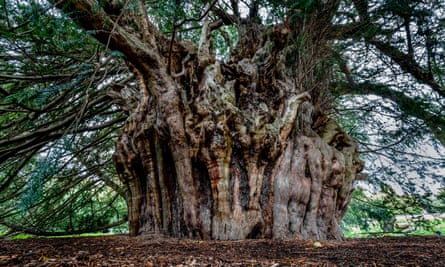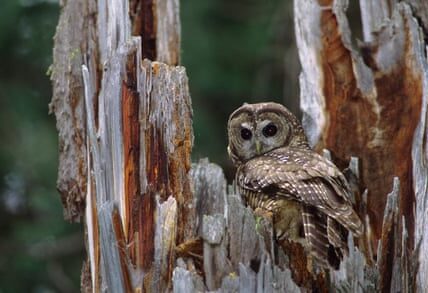A recent study discovered that East Anglian Fens were once filled with yew trees approximately 4,000 years ago.
The East Anglian Fens are recognized for their extensive agricultural fields and lack of trees in its flat terrain. However, more than 4,000 years ago, these lowlands were primarily covered by dense forests of old yew trees.
A research conducted on numerous tree trunks unintentionally unearthed by farmers in the fenlands has revealed that this forest suddenly vanished 4,200 years ago, most likely due to a swift increase in the North Sea which inundated the area with seawater.
During extensive plowing, trees that are uprooted and left at the edges of fields are commonly referred to as “bog oaks.” However, researchers from the University of Cambridge examined these logs and discovered over 400 yew trees, with some dating back 400 years at the time of their death.
The ancient yew trees, which are one of the longest-living species in Europe, are no longer found in the marshy Fens. However, they were found to be remarkably well-preserved, allowing the Cambridge team to gather detailed data from trunks that ranged from 2 to 8 meters in length.

Tatiana Bebchuk, the primary writer of the research published in the journal Quaternary Science Reviews, stated: “A frequent frustration for farmers in the Fenland region is encountering large buried pieces of wood while using their equipment. This is particularly common when planting potatoes, as they are typically planted deeper than other crops.”
I was astounded by the sheer amount of abandoned trees when I first laid eyes on them. However, upon bringing them to the laboratory, we were even more astonished. The trees were remarkably well-preserved, giving the illusion that they had only been felled yesterday.
Annual growth rings within tree trunks contain information about temperature and climate for each growing season. But finding tree rings so far back in time is unusual because wood rots.
The preserved trunks, which were found in the peaty soil of the fenlands, displayed irregular tree rings that spanned up to 400 years. Through a combination of dendrochronological analysis and radiocarbon dating, it was determined that these ancient yew trees existed between 5,200 and 4,200 years ago, during a time when the Fens were home to a dense native woodland of oak and yew trees.
The experts theorize that the yews decreased in number due to increased rainfall in the area, but ultimately vanished due to a sudden increase in sea level. This event aligns with significant changes in climate across the globe, such as a major drought in China and the Middle East that may have led to the downfall of multiple civilizations, including Egypt’s Old Kingdom and the Akkadian Empire in Mesopotamia.
Bebchuk inquired about potential connections between climatic occurrences, specifically the mega-droughts in Asia and the Middle East, and the significant increase in sea level in northern Europe. The question at hand is whether these events were part of a global climate pattern or separate regional shifts.
The cause of these climate events is still unknown, but these trees may play a crucial role in unraveling this mystery.
Source: theguardian.com


